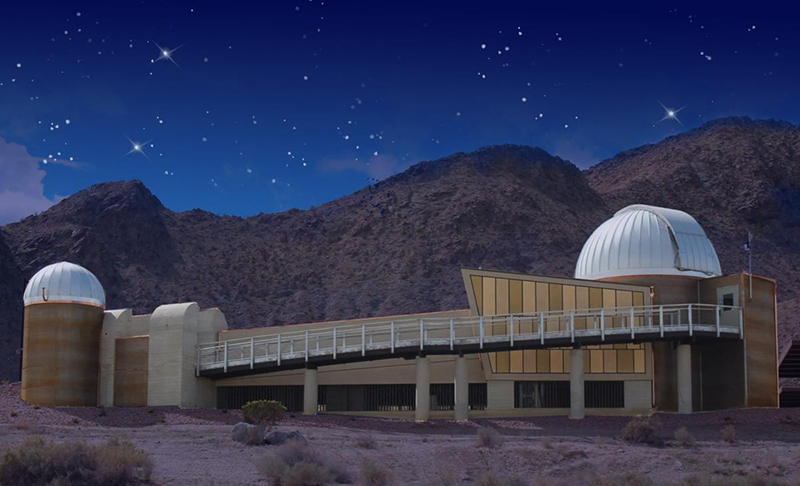Desert Stargazing

The bubbly 12-man spa at Twin Palms is a wonderful spot for stargazing in Palm Springs. But if you want to see truly mind-blowing stars, it’s worth it to towel off and hop in a car. Depending on how far you want to drive, there are several locations on the outskirts of town where you can see a spectacular display. Or head further afield to one of two International Dark Sky Parks where you might catch a glimpse of the Milky Way, depending on the season. Summer is peak stargazing time, but there’s almost always something to see. Here's where to go stargazing in Palm Springs and the Coachella Valley. Showing nightly!
Just 20 minutes away, the Rancho Mirage Library & Observatory is a state-of-the-art facility that’s open daily for tours and offers free, astronomer-led stargazing parties it calls Open Public Exploration Nights two times a week. The observatory’s two-dome structure contains a big 27.5” research-grade telescope and an outdoor viewing deck with four telescope pads. Knowledgeable guides point out planets, nebulae, star clusters, and more in the dark sky—and yes, it's all free. The facility is closed in July for annual maintenance, but twice-weekly Open Public Exploration Nights resume in August. No reservations are needed for these drop-in, open-house-style events. Find the current schedule here.
If you’re more of a do-it-yourself type, there are lots of options depending on what you want to see and how far you want to drive. Bring a blanket or lawn chair and download an astronomy app. Stick to the roads so you don’t get stuck in the sand!
Coachella Valley Preserve is located in Thousand Palms, about a 30-minute drive from Twin Palms. There is more light pollution here, but on a dark night the stars can be amazing and it’s much closer than Joshua Tree or Borrego Springs. Find a spot away from the road and stargaze knowing that the San Andreas Fault is practically under your feet.
Whitewater Canyon Preserve is another good option closer to town, with the canyon offering some protection from the light pollution of LA and Palm Springs. It’s about a 20-minute drive to the preserve; as you get close you'll find several great areas to pull off for your stargazing pleasure.
Also about 30 minutes away, the aptly named Sky Valley is located near the south border of Joshua Tree National Park and provides relatively dark skies. Park anywhere along Dillon Road.
The town of Borrego Springs became the world’s second International Dark Sky Community in 2009 and has long been a haven for professional and amateur stargazers. Located about 90 minutes south of Palm Springs, the town is uniquely protected from urban lights by the 600,000-acre Anza-Borrego Desert State Park (recognized as an International Dark Sky Park). For ideas on where to park for the best viewing, check out this map.
Joshua Tree National Park is California’s most celebrated Dark Sky Park and one of the best stargazing spots in the US to see the Milky Way during the summer months. For optimum viewing, go when there is no moon (or when the moon is not too high in the sky). It will take you about 75 minutes to get to the park from Twin Palms. The further east you drive into the park, the less light pollution you’ll encounter. Park at any of the roadside pullouts or designated stargazing areas and set up chairs or a blanket near your car. Joshua Tree also offers night sky programs throughout the year including a Night Sky Festival in mid-October.
For a more bespoke experience in Joshua Tree, join Sky-Watcher Star Tours for a two-hour exploration of the heavens in style. Relax in your own mini outdoor living room, complete with large 10” telescopes, binoculars, chairs, blankets, pillows, and a picnic basket filled with snacks. Sky Watcher’s experienced “star guides” weave together astronomy with the stories and legends behind the constellations, and will help you identify planets and star clusters. Sky-Watcher also offers monthly Starlight Yoga & Sound Bath experiences featuring New Moon and Full Moon yoga practices under the starry desert skies. Sounds like a stellar time!